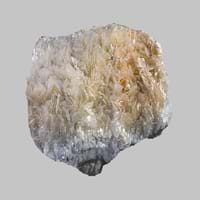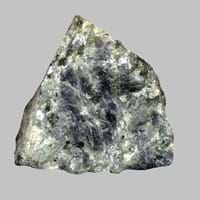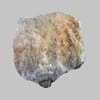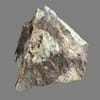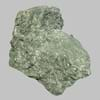Definition
Talc carbonate is nothing but a rock sequence or a mineral composition found in metamorphic ultramafic rocks.
Anorthosite is a granular igneous rock composed largely of labradorite or plagioclase
Origin
China, USA, Middle east
Unknown
Discoverer
Unknown
Unknown
Etymology
From medieval Latin, talcum
From French anorthose plagioclase + -ite1
Class
Metamorphic Rocks
Igneous Rocks
Sub-Class
Durable Rock, Soft Rock
Durable Rock, Medium Hardness Rock
Group
Not Applicable
Plutonic
Other Categories
Fine Grained Rock, Opaque Rock
Coarse Grained Rock, Opaque Rock
Texture
Very Soft
Foliated, Glassy
Color
Colourless, Grey, White
Black, Bluish - Grey, Brown, Green, Grey, Light Greenish Grey, Pink, White
Durability
Durable
Durable
Appearance
Soft
Layered, Banded, Veined and Shiny
Interior Uses
Decorative Aggregates, Interior Decoration
Decorative Aggregates, Floor Tiles, Homes, Interior Decoration
Exterior Uses
Garden Decoration
As Building Stone, As Facing Stone, Garden Decoration
Other Architectural Uses
Powder
Curbing
Construction Industry
Source of calcium
As Dimension Stone, Cement Manufacture, for Road Aggregate
Medical Industry
Taken as a Supplement for Calcium or Magnesium
Not Yet Used
Antiquity Uses
Artifacts, Jewellery, Monuments, Sculpture, Small Figurines
Artifacts, Sculpture, Small Figurines
Commercial Uses
Manufacturing of baby powder
Creating Artwork, Curling
Types
Not Available
Proterozoic Anorthosite and Archean Anorthosite
Features
Easily splits into thin plates, Generally rough to touch, Host Rock for Lead
Generally rough to touch, Is one of the oldest rock
Archaeological Significance
Monuments
Used
Not Yet Used
Famous Monuments
Data Not Available
Not Applicable
Famous Sculptures
Data Not Available
Not Applicable
Pictographs
Used
Not Used
Petroglyphs
Not Used
Not Used
Formation
Due to change in environmental conditions, rocks are heated and pressurized deep inside the Earth's surface. Talc Carbonate is formed from the extreme heat caused by magma or by the intense collisions and friction of tectonic plates.
Anorthosite is a phaneritic, intrusive igneous rock which is characterized by a predominance of plagioclase feldspar which is almost 90–100%, and a minimal mafic component.
Mineral Content
Carbonate, Chlorite, Magnesium
Amphibole, Clinopyroxene, Ilmenite, Magnetite, Olivine, Orthopyroxene
Compound Content
CaO, Carbon Dioxide, MgO
Ca, CaO, Chromium(III) Oxide, MgO, Sulfur Trioxide
Types of Metamorphism
Burial Metamorphism, Cataclastic Metamorphism, Contact Metamorphism, Hydrothermal Metamorphism, Impact Metamorphism
Cataclastic Metamorphism, Contact Metamorphism
Types of Weathering
Not Applicable
Biological Weathering
Types of Erosion
Not Applicable
Chemical Erosion, Wind Erosion
Grain Size
Fine Grained
Coarse Grained
Porosity
Less Porous
Less Porous
Luster
Pearly
Pearly to Subvitreous
Compressive Strength
Not Available
Cleavage
Perfect
Irregular
Toughness
1
Not Available
Specific Gravity
2.86
2.62-2.82
Transparency
Translucent
Translucent
Density
2.8-2.9 g/cm3
2.7-4 g/cm3
Resistance
Heat Resistant, Wear Resistant
Heat Resistant, Impact Resistant, Pressure Resistant, Scratch Resistant, Wear Resistant
Deposits in Eastern Continents
Asia
Not Yet Found
Not Yet Found
Africa
Ethiopia, Ghana, Western Africa
Not Yet Found
Europe
England
Bulgaria, France, Germany, Greece, Hungary, Italy, Latvia, Lithuania, Malta, Poland, Portugal, Romania, Slovenia, Spain, Sweden, The Czech Republic
Others
Not Yet Found
Not Yet Found
Deposits in Western Continents
North America
Canada, USA
Canada
South America
Argentina, Bolivia, Uruguay
Bolivia, Colombia
Deposits in Oceania Continent
Australia
Central Australia, South Australia, Western Australia
Central Australia, South Australia, Western Australia
All about Talc carbonate and Anorthosite Properties
Know all about Talc carbonate and Anorthosite properties here. All properties of rocks are important as they define the type of rock and its application. Talc carbonate belongs to Metamorphic Rocks while Anorthosite belongs to Igneous Rocks.Texture of Talc carbonate is Very Soft whereas that of Anorthosite is Foliated, Glassy. Talc carbonate appears Soft and Anorthosite appears Layered, Banded, Veined and Shiny. The luster of Talc carbonate is pearly while that of Anorthosite is pearly to subvitreous. Talc carbonate is available in colourless, grey, white colors whereas Anorthosite is available in black, bluish - grey, brown, green, grey, light greenish grey, pink, white colors. The commercial uses of Talc carbonate are manufacturing of baby powder and that of Anorthosite are creating artwork, curling.
